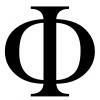Password entry when mounting encrypted drives (FileVault, Time Machine)

Hi - I recently encrypted one of my Time Machine backups under Mac OS 10.8.2. Thereafter, as the disk mounted, I was presented with a password dialog box similar to the fourth image in the following MacLife article: http://www.maclife.com/article/howtos/how_encrypt_your_usb_thumb_drives_lion . The text was as follows:
Enter a password to unlock the disk "[DISKNAME]".
Password: [TEXT ENTRY FIELD]
[CHECKBOX] Remember this password in my keychain
[SHOW HINT] [CANCEL] [UNLOCK]
To my annoyance, this is one of those "locked down" dialogs, i.e., one that prohibits copying, pasting, or dragging/dropping of the password from an external source, and that requires the user to manually type it. At least once, anyway, as one can also click the "remember this password in my keychain" checkbox to avoid that inconvenience in the future.
The thing is, I'd rather rely on 1Password to store and populate this information than the Mac's keychain. Is there any way to make this happen?
Thanks in advance!
Comments
-
In cases like this I would recommend saving the canonical item in 1Password for reference, but you can also opt to store the password in the OS X keychain for convenience. It doesn't have to be one or the other. You can do both, so that if you are ever away from your Mac or setting up a new one, you will have your password(s) handy in 1Password. It is much like allowing Mail to save your email password and OS X to save your Wi-Fi network passwords in the OS X keychain so you don't have to keep entering them all the time while you use the same Mac. Generally, you would only need to type them in the first time you run the Mac and set up your account in Mail and connect to your Wi-Fi network.
If the issue is that you don't want to store the password(s) in the OS X keychain for some reason, you could consider using the same technique to create passwords in those cases that we recommend for creating Master Passwords. Just be sure to never use your actual Master Password for anything else. But I'm sure you knew that already. :)
0
